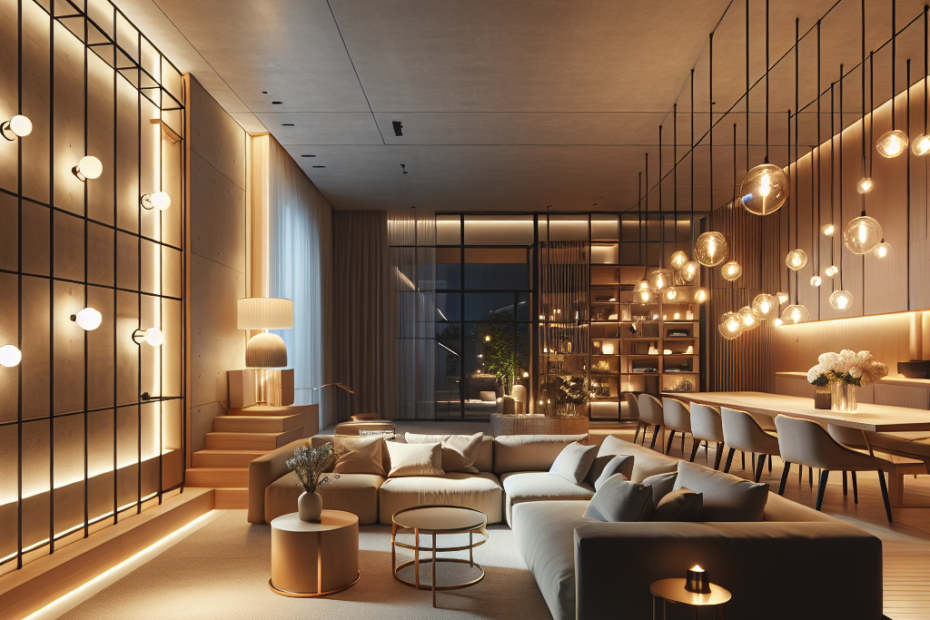“`html
The Power of Architectural Lighting in Modern Homes
Architectural lighting in modern design has transformed the way people perceive and interact with spaces. With a focus on both functionality and aesthetics, architectural lighting plays a crucial role in shaping the ambiance and practicality of modern homes. This dynamic evolution in design is not merely about illuminating spaces but creating an environment that enhances mood and experience.
The Role of Architectural Lighting
In modern homes, architectural lighting serves multiple functions. First, it provides essential illumination for daily activities. Second, it serves to highlight architectural features, emphasizing textures and forms that may otherwise go unnoticed. Lastly, effective lighting design enhances the emotional and psychological well-being of the inhabitants by influencing mood and energy levels.
Innovations in Lighting Technology
Thanks to innovations in lighting technology, designers today have an array of tools at their disposal. LEDs, for example, have revolutionized lighting with their energy efficiency and flexibility. According to a Department of Energy study, LED lighting uses at least 75% less energy and lasts 25 times longer than incandescent lighting. These innovations not only reduce energy costs but also provide architects and interior designers with the flexibility to experiment with intricate lighting patterns and colors.
Design and Aesthetics
With architectural lighting, designers create layered lighting plans that blend ambient, task, and accent lighting. This approach ensures that various functional and aesthetic requirements are met without overwhelming the space. Accent lighting, for instance, can highlight artwork or architectural elements like a feature wall or an impressive staircase, turning them into focal points within a room.
Impact on Well-Being
The influence of light on psychological well-being is profound. Studies have shown that appropriate lighting levels can improve mood, increase focus, and boost productivity. The Journal of Environmental Psychology highlights how people exposed to natural and well-designed artificial lighting report higher levels of satisfaction and reduced stress levels.
Environmental and Cost Benefits
The environmental benefits of incorporating energy-efficient architectural lighting are significant. Modern lighting solutions contribute to reducing a home’s carbon footprint. The ability to control lighting intensity and automate lighting schedules through smart home systems further aids in minimizing unnecessary energy usage. These eco-friendly strategies not only support global sustainability efforts but also lead to considerable cost savings over time.
Key Takeaways
- Multi-functional: Architectural lighting provides essential illumination, highlights features, and enhances well-being.
- Technological Advancements: Innovations like LED lighting allow for environmentally friendly and versatile design solutions.
- Layered Design: Blending ambient, task, and accent lighting improves both functionality and aesthetics.
- Well-Being: Proper lighting design positively affects mood and productivity.
- Cost and Environment: Energy-efficient lighting reduces costs and supports sustainability.
Table: Comparative Analysis of Lighting Types
| Lighting Type | Energy Efficiency | Lifespan | Aesthetic Flexibility |
|---|---|---|---|
| Incandescent | Low | Short | Limited |
| Fluorescent | Moderate | Moderate | Moderate |
| LED | High | Long | High |
FAQs
-
What is architectural lighting?
Architectural lighting is a method focused on enhancing the aesthetic and functionality of a building through strategic lighting design.
-
How can lighting improve well-being?
Proper lighting can improve well-being by influencing mood, enhancing focus, and reducing stress levels.
-
Are LED lights more energy-efficient?
Yes, LED lights are significantly more energy-efficient, using at least 75% less energy compared to traditional incandescent lights.
-
What is layered lighting?
Layered lighting is a design technique that combines ambient, task, and accent lighting to create a balanced and functional lighting scheme.
-
Can smart home systems reduce lighting costs?
Yes, smart home systems can reduce lighting costs by automating lighting schedules and controlling light intensity, optimizing energy use.
“`
This blog post highlights the importance of architectural lighting in modern homes, emphasizing its functional and aesthetic value. It provides a comprehensive overview, addressing technological advancements and environmental benefits while summarizing key points and addressing common questions through FAQs.
